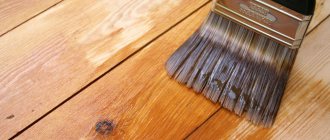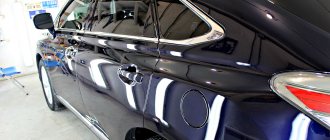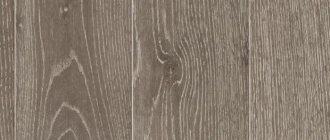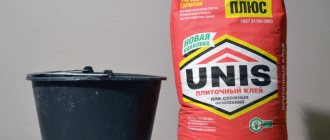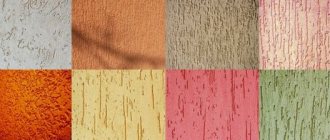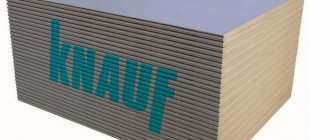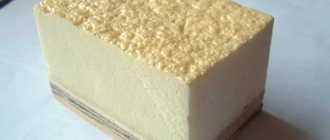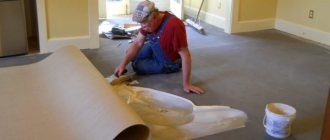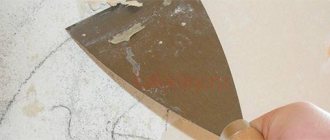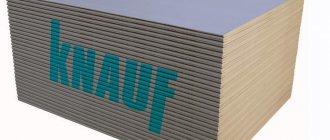NC varnish (nitrocellulose, nitrovarnish) is the best choice for protecting wooden furniture. This is the result of the combination of nitric acid esters of cellulose. Applying nitro varnish on wood improves the aesthetics of the coating. The result is a durable transparent or colored film.
Certain characteristics of the product depend on the addition of plasticizers and resins to the composition (for example, waterproof nitro varnish), pigmenting components of organic origin (they create a shade or color of the surface). Nitrovarnish is used when processing cabinets, cabinets, and benches.
Features of nitro varnish
The basis of the product is high-quality nitrocellulose (an artificial polymer, the structure of which is very similar to natural cellulose fibers). The mixture is ready to use. The varnish itself dries quickly, but the result remains smooth, uniform, and hard.
The composition has increased adhesion. There is no need to additionally prime the surface.
Depending on the composition of the NC, the varnish can be glossy, matte, or semi-gloss. The protective film of wooden furniture also has a decorative effect, but can be destroyed under the influence of high temperature and ultraviolet radiation. The product is also used for parquet floors.
It must be applied in several thin layers.
Since nitro varnish is highly flammable, it must be stored and worked with away from fire and sources of sparks.
To prevent the composition from drying out, you can add a solvent (about 5% of the total amount of varnish) to it, then mix thoroughly.
Material properties
The important advantages of the product are its ease of application, low cost and high quality. The film created, depending on the specific brand, can be:
- matte;
- glossy;
- semi-matte, semi-gloss.
The coating will be uniform, even, hard, it has excellent adhesion to the base, and it sands well. Products with such a coating should be used at a temperature of +12...+60 degrees; at a higher temperature, the varnish will quickly deteriorate. The material is ideal for parquet and furniture (it is often called parquet or furniture varnish), wooden floors, doors, souvenirs and other wood products.
These products can be used indoors; most types of varnish are not intended for outdoor use. Also, the disadvantages of the product include its low physico-chemical resistance, increased flammability, and high sensitivity to water and sunlight.
Compound
In addition to wood (or cotton) cellulose, an organic thinner, alkyd and amino-formaldehyde resins, Winsol and rosin are added to the composition. Propyl acetate, acetic acid esters, toluene, ethyl acetate, and xylene can be used as solvents. Possible nitroparaffins (plasticizers) include chlorinated paraffin, phosphates, and casterol.
Production
The production technology is complex and is carried out in stages:
- dissolution of resins and colloxylin with organic substances;
- adding plasticizers, modified compounds;
- measuring the results obtained;
- cleaning the composition;
- filtration;
- spilling into containers (for example, nitro varnish in cans).
Nitrolacquer is tinted by adding pigments. Without them, the finished product remains transparent (colorless). The amount of added components is entered relative to the volume of colloxylin. The main component is classified as flammable and explosive, so it is stored in a sealed container under proper conditions. By adding colloxylin you can increase the thickness of the product. If it is too viscous and thick, it is diluted with solvents. To ensure that paints and varnishes have a uniform consistency, the composition is cleaned in centrifuges.
Colloxylins can be of high-viscosity or low-viscosity grades (BB or PSV, respectively), and are produced from cotton and wood cellulose. The nitrocellulose base creates a protective film after applying the product to the surface itself. Solvents can be high-boiling (dioxanes, ketones, for example, methyl isobutyl ketone or cyclohexanone), low-boiling (formal glycol, ethyl acetate, propyl acetate, methyl ethyl ketone, acetone). The addition of xylene and toluene allows you to adjust the consistency of the composition.
Plasticizers are either gelling or non-gelling. The second category includes casterol, chlorinated paraffin, castor oil, sovol. For gelatinizing types, additives from sebacates, phosphates, and phthalates are suitable.
To get colored nitro varnish, do:
- dissolving the coloring pigment in an organic solvent;
- combining the finished coloring solution with the finished composition of nitrocellulose varnish.
Preparation of colloxylin (loosening, weighing) is carried out in a separate room due to the increased fire hazard. The component is stored in sealed aluminum barrels.
The production of nitro varnishes with a thick consistency requires the use of mixers with horizontal loading and the alternate addition of components: alcohol, thinner, resins, resin solutions, plasticizers, colloxylin, active solvents. The finished nitro varnish is packaged in barrels, jars or tanks.
Nitrocellulose mixture can also be prepared at home. Watch the video.
What is nitrocellulose
Nitrocellulose; is the common name for the highly flammable compound cellulose nitrate. Cellulose nitrates are nitrogen esters of cellulosic materials, usually cotton linters and wood pulp.
Nitrocellulose, a very light white substance, retains some of the fibrous structure of virgin cellulose. It is not heat-resistant, and even a carefully prepared sample will immediately ignite at temperatures above 150 °C.
In 1838, French chemist T. J. Pelouze discovered that cotton became explosive when doused in concentrated nitric acid. K.F. Schönbein, on the other hand, in 1845, dipped cotton in a mixture of nitric and sulfuric acids, then washed it to remove excess acid, thus producing nitrated cotton. E.
Schulze, who was a major in the Prussian army, succeeded in producing cotton gunpowder from a nitrocellulose mixture around 1860.
- Following the discovery that dry or wet nitrocellulose could be detonated using a detonator, gelatinized nitrocellulose came into use as a powerful explosive in the 1880s.
- Nitrocellulose is not a stable substance; When it begins to decompose, the resulting products act as catalysts and cause the decomposition to continue.
- If this reaction is not stopped, an explosion will occur. Sir Frederick Augustus Abel discovered in 1868 that washing treatments after nitration did not sufficiently neutralize nitrocellulose.
- The quality of the material was improved through the development of more efficient washing processes, but the explosion of nitrocellulose cartridges could not be prevented. Paul Vieille added special stabilizers to nitrocellulose to neutralize the catalytic effect of decomposition products;
- The result was smokeless gunpowder, the first stable and reliable type of gunpowder.
Cotton powder is nitrocellulose containing more than 13 percent nitrogen. It is soluble in acetone, but insoluble in mixtures of ether and alcohol. It is used in the manufacture of gunpowder alone or mixed with lower quality nitrocelluloses.
Wet cotton gunpowder was formerly widely used as a powerful explosive.
Cellulose that is not completely nitrated is called collodion cotton, pyroxylin, or soluble nitrocellulose (because they dissolve in the ether-alcohol mixture). These are weaker explosives than cotton wool.
- Collodion, containing up to 12% nitrogen, is used in the production of varnishes and celluloid plastics.
- Nitrocelluloses, containing about 11.5% nitrogen, have been used as rayon in the past.
- Nowadays, artificial silk would be replaced by other artificial materials.
- The same material was also used in the production of photographic film before the advent of cellulose acetate plastics.
- Collodion, containing 12 percent nitrogen, is used to produce gunpowder and gelatinous dynamite.
Nitrocellulose (clair cotton) - produced by treating pure cellulose with a mixture of sulfuric and nitric acids. Acetone is also soluble in ether. Its ethereal solution is called collodion.
Celluloid, a plastic material, is obtained by mixing collodion with camphor. Because this material, once used in filmmaking, is highly flammable, other materials are used in filmmaking today.
Brands and specifications
The technical features and strength of nitro varnishes depend on the brand. This takes into account the possibility of using them for specific work, for example, parquet covering.
NTs-62
This is a colorless NC wood varnish, which is suitable for decorative products and improves their aesthetics. Depending on the added pigments, it can be red, purple, green or any other color. Colored varnish is used more instead of paint. In addition to wooden surfaces, NTs-62 is used to cover mosaic display cases, glass, paper, metal, and illumination lamps.
Viscosity degree – 26-40 s;
dry residue share – 7-12%;
consumption – 70-100 g/m2;
the result is transparent, colorless (colored), glossy.
Solvent No. 646 can be used as a thinner. The varnish should be applied in 1-2 layers, after the previous one has completely dried.
NTs-134
The varnish belongs to the category of quick-drying. Suitable for wooden and metal bases. The strength of the dried layers allows the varnish to be used for outdoor use. Solvents can be used No. 645 or No. 646.
Specifications:
- degree of viscosity – 28-60 s;
- drying time – 30-60 minutes;
- part of non-volatile components – 13-17%;
- the result is an even glossy finish.
New layers are applied only after the previous one has dried.
NTs-218
Brand for wooden window sills and furniture. Quick-drying varnish (no more than an hour at room temperature). The quality of the result is possible when applied to a flat and dry surface. The finished coating can last about 10 years. Antiseptic additives in the composition protect parts from rotting and destruction by insects. The interior treatment of cabinets protects items from snags. The result of the coating is matte.
According to technical characteristics:
- degree of viscosity – 50-85 s;
- part of the dry residue – 30-34%;
- color – colorless;
- The level of elasticity of the film when bending is 15 mm.
The product can only be used for interior work.
NTs-223
This is a varnish for interior use and wooden surfaces only.
Technical specifications:
- degree of viscosity – no more than 125 s;
- moisture resistance – at least 6 hours;
- elasticity of the dried coating – 5 mm;
- part of non-volatile substances – 33-36%.
The result is a smooth film with a glossy sheen.
NTs-224
Composition with the addition of resins and esters to protect against cracking. The result is easier to polish. There is no need to dilute the varnish before use. It is necessary to maintain the temperature regime during operation - about +18-+20°C. In terms of other technical properties, the product is similar to NTs-223.
NTs-225
Often used for processing interior doors. Easy to polish and resistant to high temperatures.
Characteristics:
- part of the dry residue – 35-40%;
- degree of viscosity of the composition – 115 s;
- the optimal thickness of one layer is 50 microns.
Quality is guaranteed after applying 1-2 layers. This is due to the addition of plasticizers and film-forming substances to the composition.
NTs-241
The peculiarity of the product is explained by the urea resins in the composition. They make the composition resistant to moisture and low temperatures. The finished coating dries for at least 1.5 hours. The result itself is matte transparent.
NTs-243
The addition of pigments gives the finished coating a slightly pink or yellowish tint. The product belongs to the category of quick-drying matting compositions. Relevant for hiding defects.
Characteristics:
- drying time of the layer – 60 minutes;
- part of the dry residue – 26-32%;
- degree of light fastness – 60 min.
The finished dried base remains smooth, without wrinkles or foreign inclusions.
NTs-551
Nitrocellulose composition grade 551 is used for processing textiles (special purpose fabrics).
- Part of the dry residue – 9%;
- degree of viscosity – 130-160 s;
- shrinkage level – 0.6%.
The surface itself must first be cleaned of old paint and varnish material, dust, and roughnesses must be sanded. The varnish must be applied in four layers. The first layer dries in about 1-2 hours. To speed up the process, you can use a hair dryer. Each layer should be left for 6-8 hours to dry completely. Before applying varnish, it is recommended to treat the surfaces with a water-based stain.
What is the average varnish consumption?
Most manufacturers guarantee to use a liter of material for every 10 square meters. The denser the varnish, the less its consumption. It is recommended to apply liquid substances in a couple of layers. Based on this, the consumption of such types of varnish is higher.
Consumption also depends on the type and tone of the wood, the presence of wide pores, cracks or chips on the surface. The method of application also plays an important role in this. Less substance is wasted if it is sprayed from a spray bottle. Painting with a brush increases the consumption of varnish.
The better the surface is processed and polished, the less varnish will be used to refine it. Moreover, when choosing such a material, you should pay attention to tikkuril wood varnish.
The Finnish manufacturer has been specializing in the production of these products for many years. There are rulers designed for parquet. Other wood varnishes from this company are reliable, wear-resistant, and of high quality.
The process of applying nitro varnishes
If you need to cover small parts with nitro varnish, for example, wooden handles, then the easiest way is to lower each part into the container with the composition for a few seconds, and then take it out and allow the excess varnish to flow back into the jar. If the coated product cannot be laid down, it can be hung until dry. An alternative option for applying nitro varnish is to spray it from cans.
In all other cases, you will need an additional tool, attentiveness and a little time.
The process of applying nitro varnish consists of several stages.
- Surface treatment with water-based (alcohol-based) stain or with the addition of an organic solvent. This will preserve the texture and grain of the wood.
- Applying the first layer of nitro varnish, which must be allowed to dry completely (at least 45 - 120 minutes). You can speed up the process with a hair dryer.
- The second layer of applied product should dry for at least 6-8 hours.
- The surface must be sanded.
- Each new layer is applied in a mandatory perpendicular direction to the previous one.
Application features also include the use of high-quality brushes, which allows you to create a uniform protective film on the surface.
Acrylic paint: does it need a varnish layer?
The acrylic-based coloring composition has a water-dispersion base. The main binder (polyacrylates, polymers of various compositions) is distributed in water, but does not mix with it and does not enter into a chemical reaction. In addition to acrylates, the composition includes a surface-active additive (plasticizer) and an antiseptic.
The plasticizer is responsible for the formation of a protective surface film. Thanks to this additive, the coating is resistant to wear, mechanical damage and moisture. Acrylic dye is environmentally friendly, dries quickly, and many people find that it creates an impenetrable layer once dry. This is only partly true.
Acrylic is characterized by thermoplasticity. This means that if the coating gets too hot (for example, under the sun's rays), it will reduce its strength, and it is quite easy to damage the softened layer. It has been repeatedly observed that if two acrylic coated surfaces come into contact, there is a possibility of them sticking together.
The varnish layer increases the attractiveness of the furniture Source archidea.com.ua
As the painted acrylic surface dries, water evaporates. The process proceeds quickly, and at the end of it micropores remain. If you apply a layer of varnish on top, it will harden, close the pores and increase the durability of the paint layer.
Varnish is applied to acrylic paint in many cases; for example, artists varnish paintings painted with acrylic. Finishing craftsmen try to varnish wooden surfaces; the same rule is used in furniture production.

